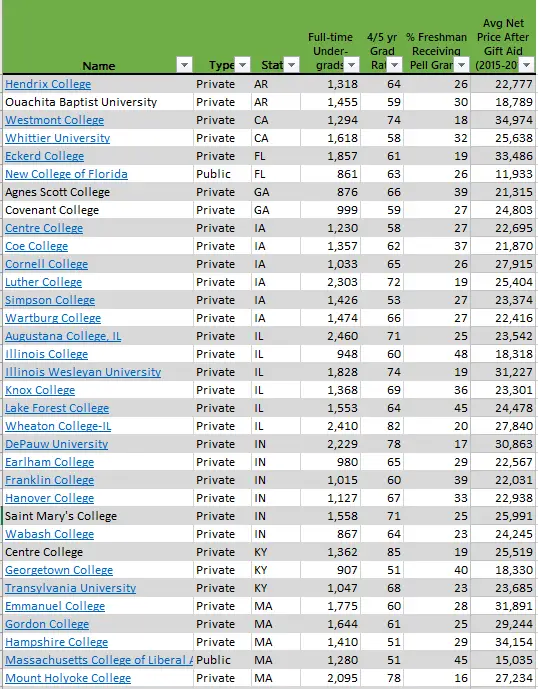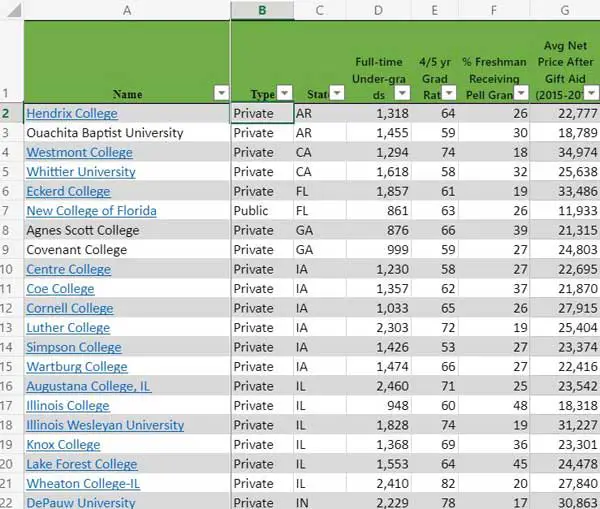 US News Best College Rankings consists of two national lists: National Universities and National Liberal Arts Colleges. Most people recognize the schools at the top of the National Universities list. Those at the top of the National Liberal Arts lists? Not so much. The reason is because by definition, Liberal Arts Colleges (LAC) are smaller, have a limited number of majors, and few, if any graduate students. And this makes them some of the most effective college teaching experiences around.
US News Best College Rankings consists of two national lists: National Universities and National Liberal Arts Colleges. Most people recognize the schools at the top of the National Universities list. Those at the top of the National Liberal Arts lists? Not so much. The reason is because by definition, Liberal Arts Colleges (LAC) are smaller, have a limited number of majors, and few, if any graduate students. And this makes them some of the most effective college teaching experiences around.
Advantages of Liberal Arts Colleges
According to the National Survey of Student Engagement (NSSE), seniors at Liberal Arts Colleges are more likely to have participated in High-Impact Practices of Research with Faculty, Internship or Field Experience, Study Abroad, and Culminating Senior Experience.
Join other parents in the Coffee Cup College Planning Facebook Group
The study of the Baccalaureate Origins of Science and Engineering(S&E) Doctorate Recipients, found only Research Universities (very high research activities) produce more S&E doctorates per student than Liberal Arts Colleges. And even the Research Universities did not outperform the Oberlin 50 group of Liberal Arts Colleges which include Albion College, Alma College, Beloit College, DePauw College, Earlham College, Hope College, Kalamazoo College, Mount Holyoke, Ohio Wesleyan, Wabash College, Wheaton College-IL, Whitman College, and the College of Wooster–all 50-50 Colleges.
Public Liberal Arts Colleges are Rare
Of the 217 colleges listed as Baccalaureate Colleges–Arts & Sciences in the Carnegie Classification, 105 qualify as 50-50 schools. Unfortunately, most LACs tend to be private institutions, only 24 public institutions are classified as Baccalaureate Colleges–Arts & Sciences. Of these, only 9 qualify as 50-50 schools.
The following tables lists all 50-50 colleges classified as Baccalaureate Colleges–Arts & Sciences in the Carnegie Classification. This shouldn’t be considered a definitive list since there are schools that are considered Liberal Arts Colleges with other Carnegie Classifications. Obviously, anyone who starts looking for LACs wouldn’t stop at this list. As always, the four-year graduation rate is used for privates colleges and the five-year rate for public schools.
CONNECT WITH OTHER PARENTS PLANNING FOR COLLEGE
JOIN THE COFFEE CUP COLLEGE PLANNING FACEBOOK GROUP



